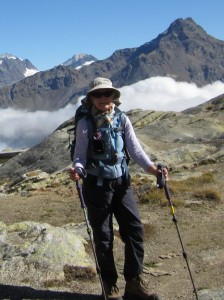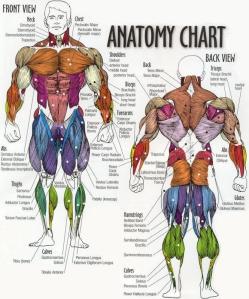Gentle Reader,
Climbing up a long snowy track on cross country skis yesterday, my companions and I talked about little miracles, ‘woo-woo’ magic, the unexplained healing that sometimes occurs. The husband of one friend has suffered from arthritis in both ankles for about 5 years, so bad that he could barely walk. He is in his late 50’s. The friend herself worked a stressful tech job that required her to bend over patients. She suffered from excruciating pain from her head down her neck, along her shoulders and down her arms. In time the pain reached down her back.
The man, slim, fit, an avid cyclist who couldn’t walk without extreme pain, got one of his ankles fused, a newish operation for arthritis. They chose the more painful of the two to work on. The operated ankle no longer hurts. The ‘woo-woo’ miracle is that the other ankle no longer hurts. He can walk 5 miles. The x-rays indicated that both ankles were equally damaged by the disease. Hum. . . . . .
The friend with the pain from bending over at work? Her doctor’s diagnosed fibromyalgia and offered drug therapy. After much consideration, she retired from her job. All the pain has vanished.
Were the x-rays wrong? Were the doctors missing something?
In my own case, I hurt my back badly at age 52. By the age of 55, I was diagnosed with a severe condition that my doctor said would put me in a wheel chair. At age 75, I am pretty much pain free. I haven’t had any of the operations they suggested. A check up with more pictures at age 65, the doc said, “If I didn’t know you, I’d say you should be in a wheel chair.”
What’s going on here? These three stories, my friend with diagnosed fibromyalgia, her husband with arthritic ankles and me with a back condition so bad I should be in a wheel chair all have to do with pain and the skeletal structure, nerves and pain messaging. Compelling research has been done with thought, intention and cancer. Here is a short video about this healing work. Do Thoughts Have the Power to Heal? Could similar healing happen with skeletal and nerve problems? Even if you don’t direct intention to the condition such as with my friend’s husband? He’s not interesting in discussing the ‘miracle’ healing of the second ankle.
You can read my story and what I’ve done to be pain free today in past blog posts. Perhaps the most important thing is hope, belief and action, in that order. I seldom miss my morning routine to limber everything up. I listen to a CD meditation that declares night after night that my cells have all the right nutrients to recreate themselves new and healthy, even the ones in my back that are supposed to be all messed up.
Miracles of healing? As the doctor says, “whatever you’re doing, keep it up.” And so I do. How about you?
Fondly,
Be Well, Do Well, Keep Moving
Betsy
Injured at 52. Diagnosed and sentenced to a wheel chair at 55 and 65. Hiking, skiing, dancing and walking at 75. Read my story.
206 933 1889 www.GrandmaBetsyBell.com Betsy@HiHoHealth.com



 looked at my Magnetic Resonance Imaging—MRI, he declared my bones to be poor candidates for surgery. They already looked worn out at age 53.
looked at my Magnetic Resonance Imaging—MRI, he declared my bones to be poor candidates for surgery. They already looked worn out at age 53.